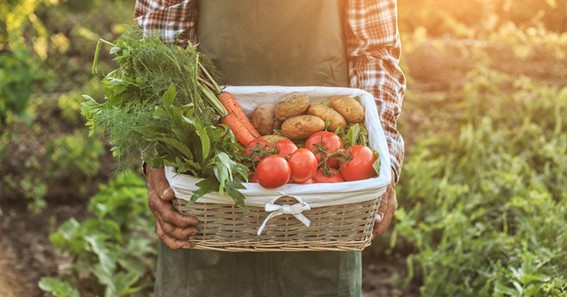Are you curious to know what is multi cropping? You have come to the right place as I am going to tell you everything about multi cropping in a very simple explanation. Without further discussion let’s begin to know what is multi cropping?
What Is Multi Cropping?
In the world of agriculture, maximizing productivity and sustainability are key objectives. One effective approach that farmers employ to achieve these goals is multi cropping. Multi cropping, also known as intercropping or polyculture, is a farming practice that involves cultivating multiple crops simultaneously in the same field. In this blog, we will delve into the concept of multi cropping, its benefits, and how it contributes to a more resilient and productive agricultural system.
Understanding Multi Cropping:
Multi cropping is a method of diversifying agricultural production by growing different crops together in a single field. Unlike monoculture, which involves growing a single crop over a large area, multi cropping embraces the power of plant diversity and synergy. The selected crops are carefully chosen to complement each other, taking into consideration factors such as growth habits, nutrient requirements, and compatibility.
Benefits Of Multi Cropping:
-
Enhanced Yield And Resource Utilization:
Multi cropping maximizes the use of available resources, including sunlight, water, and nutrients. Different crops have varying root depths, growth rates, and nutrient requirements. By combining crops with different characteristics, farmers can optimize resource utilization, resulting in higher overall productivity compared to growing a single crop.
-
Reduced Risk And Increased Resilience:
Planting multiple crops diversifies the farm’s production, reducing the risk of total crop failure due to pests, diseases, adverse weather conditions, or market fluctuations. If one crop is affected, the others can compensate, ensuring a more stable and resilient farming system. Multi-cropping acts as a form of insurance, minimizing the impact of unforeseen events.
-
Weed And Pest Control:
Multi cropping can contribute to natural pest control and weed management. Some crop combinations exhibit natural repellent or deterrent effects on pests, reducing the need for chemical interventions. Additionally, diverse plantings can help suppress weed growth, as the competition from different crops inhibits the growth of unwanted plants.
-
Soil Health And Nutrient Cycling:
Different crops have diverse nutrient requirements and root systems, which can improve soil health and nutrient cycling. Multi cropping can help reduce soil erosion, increase soil organic matter, and enhance nutrient availability. Certain crop combinations, such as legumes and cereals, have a symbiotic relationship where legumes fix nitrogen from the air, benefiting neighboring crops that require nitrogen for growth.
-
Economic Viability And Market Opportunities:
Multi cropping opens up opportunities for farmers to diversify their income streams. Growing a variety of crops allows farmers to cater to different market demands and capitalize on price fluctuations. Additionally, multi cropping can promote local food systems and foster direct relationships between farmers and consumers, enhancing the economic viability of agricultural operations.
Examples Of Multi Cropping Systems:
-
Mixed Vegetable Gardens:
Growing a combination of vegetables, herbs, and companion plants in a single plot, utilizing vertical space and crop compatibility, to maximize productivity and space utilization.
-
Agroforestry Systems:
Integrating trees, shrubs, and crops in a managed system, providing shade, nutrient cycling, and diversifying income through timber or fruit production.
-
Three Sisters Agriculture:
A traditional Native American method that combines corn, beans, and squash, where each crop provides unique benefits to the others. Corn provides a trellis for beans, beans fix nitrogen for corn, and squash acts as a ground cover, reducing weed growth.
Conclusion:
Multi cropping is a sustainable and efficient farming practice that harnesses the power of plant diversity to enhance agricultural productivity. By growing multiple crops together, farmers can optimize resource utilization, reduce risk, improve soil health, and foster ecological balance. Multi cropping represents a shift towards resilient and sustainable agriculture, promoting food security, economic viability, and environmental stewardship. As we recognize the importance of a diverse and resilient food system, embracing multi cropping offers a path towards a more sustainable future for agriculture.
FAQ
What Is Multi Cropping Class 9?
It is the practice of producing two or more crops on the same plot of land at the same time, rather than simply one, throughout the same growing season. Multiple cropping aids in enhancing the land’s yield. One example of multi-cropping is tomatoes + onions + marigolds.
What Is Multiple Cropping?
Multiple cropping, defined as harvesting more than once a year, is a widespread land management strategy in tropical and subtropical agriculture. It is a way of intensifying agricultural production and diversifying the crop mix for economic and environmental benefits.
What Is Mixed Cropping Class 8?
When two or more crops are grown on the same land simultaneously, it is known as mixed cropping. For eg., growing wheat and gram on the same land at the same time is mixed cropping.
What Is Multiple Cropping One Line Answer?
The practice of growing two or more crops simultaneously on the same piece of land is known as multiple cropping in agriculture.
I Have Covered All The Following Queries And Topics In The Above Article
What Is Multi Cropping System
What Is Multi Cropping Class 9
What Is Multi Storey Cropping
Multi Cropping Examples
What Is Multiple Cropping Class 8
What Is Multiple Cropping In Palampur
Advantages Of Multiple Cropping
What Is Multiple Cropping Short Answer
Multiple Cropping Means Growing
When Is Multiple Cropping Possible
What Is Multi Cropping
What do you mean by multiple cropping
What is multiple cropping in agriculture?
